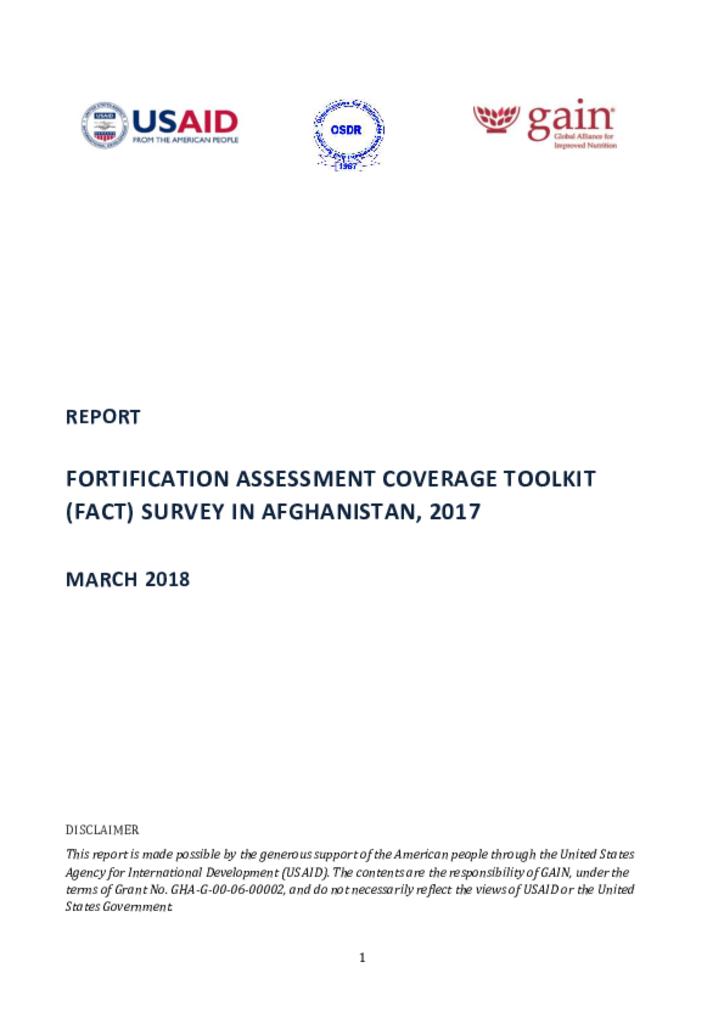Micronutrient deficiencies continue to be a major challenge in Afghanistan. To combat this, large-scale food fortification of salt, wheat flour and oil was implemented. The iodisation of salt began in 2003, becoming mandatory in 2011, and it has expanded to include 32 iodized salt factories functioning in 14 provinces. The fortification of wheat flour and oil, on the other hand, remains relatively nascent and is not yet mandatory, although legislation to make it mandatory is currently under review. To date, there is a lack of rigorous data on coverage and utilisation of fortified foods, which impedes the ability to identify bottlenecks, make recommendations, and effectively tackle the challenges to fortification in Afghanistan.
A Fortification Assessment Coverage Toolkit (FACT) survey was implemented in 2017 through a national cross-sectional household survey and a market assessment. The survey aimed to fill these data gaps by providing information on household coverage of fortifiable and fortified foods, as well as the micronutrient contribution from fortified foods for women of reproductive age (15 to 49 years) and children (less than 5 years of age).
This survey provided evidence that the fortification of salt with iodine and oil/ghee with vitamin A could have a large and immediate impact in the Afghan population. However, for these programs to function optimally, all products (both nationally manufactured and imported) must comply with the fortification standards. Alternatively, the prioritisation of wheat flour fortification deserves additional analysis since only about half of all households consumed it in a fortifiable form, which greatly limits its potential for impact on micronutrient intakes.
